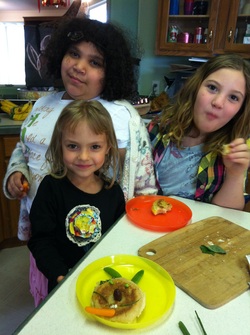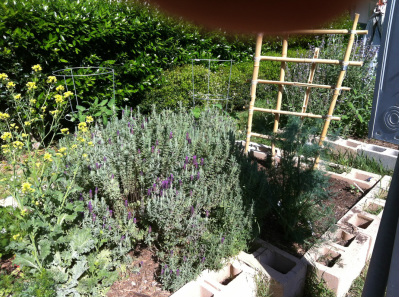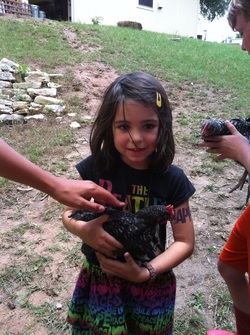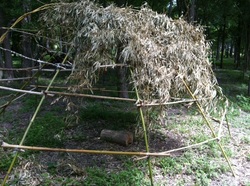
 Our gluten-free cooking class had a blast cooking and baking our way through the year! We practiced important kitchen skills such as washing our hands beforehand, measuring ingredients, careful stove and oven procedures, rolling dough, and trusting our instincts as well as our recipes. Our class made many delicious foods this year, including homemade pretzels, cheesy herb pasta, cinnamon rolls, flapjacks, Earth Day balls, cute grilled cheeses and fruit snacks, smoothies, ice cream-in-a-bag and much more! They especially loved doing some blind taste-testing of apple varieties and cheeses. (If your child has an inexplicable desire for gruyere or Gouda, this might be why!) I hope their enthusiasm for all things culinary continues to grow as they do!
0 Comments
 Our apothecary classes focused on how to use a variety of herbs for their healing properties. Students collected herbs from the apothecary gardens and the natural environment on campus. They used the botany book to identify herbs and discover their properties. The products students created this semester included: beeswax lip balm, cooling tea, lavender oil essences, beeswax candles, incense, sore throat pastilles and immune system-building oils. Students learned that different plants’ healing properties are harvested from different parts of the plants.  We continued to work on gardening skills and awareness of plant life cycles with the planting of cool season crops, including French sorrel, lettuce, dill, kohlrabi, snow peas, potatoes, and carrots. We learned about the different parts of plants and their roles by examining our crops (carrots are roots, broccoli is flower buds) and playing “plant part bingo” as well as acting out the parts of a tree. When the weather warmed up, we planted tomatoes with funny names, as well as basil, cucumbers, and watermelon. A favorite part of the gardening was learning about the traditional American Three Sisters garden that mixes corn, beans and squash. Our Three Sisters garden is doing well with the beans climbing the corn stalks, squash leaves shading the ground, and buried dead fish acting as fertilizer for them all. Elsewhere we created an edible play area by erecting a tepee and planting sugar snap peas and later pole beans around it. We talked about our five senses while exploring our gardens using them all-- touching fuzzy leaves and square stems; smelling sweet chocolate daisies; tasting herbs; observing germination, growth and development of flowers and fruit; and listening for birds and bees. We had great time learning about Arbor Day while planting a native chinquapin oak seedling. We learned how animals look different and have different life strategies by observing Cabbage White butterfly caterpillars that metamorphosed on our mustard plant, a dead Barred Owl, a mouse, slugs and snails, and plenty of other insects and arachnids. We learned about spring time by going on scavenger hunts, finding and eating edible plants, reading about and observing birds, including our hatching chicks, and acting out spring time activities such as birds making nests and laying eggs. Semester report from Helen for the primary class  The class built this shelter The class built this shelter Our semester has ended with an amazing EXPO, and suddenly everything is very quiet around here. The teachers are busy finishing narrative reports and have been sending in their elective write ups. Since there won't be much to report until summer camp, I thought I would share the elective reports for the next few blogs. This is Rachel's write up about the two survival skills electives she offered this semester... This semester in survival, students participated in a number of fun and engaging activities. They used their powers of creative thinking to decide how many different uses one object could provide. They learned about the seven basic needs of survival, identification of local venomous snakes and spiders (via pictures – although we did see a baby coral snake one day!), and basic wilderness first aid, as well as what to put in a basic survival kit. Students had hands-on experience in a variety of fire-building methods, and got to try out a fire drill. They learned knife safety, ways of making water safe to drink, and different types of shelter they could seek. Students participated in making cane poles, fishing in the creek, and building a wikiup. On the final Friday, both classes participated in a brainstorming activity to help envision how the survival class could continue to grow in interest, usefulness, and excitement for next year. I hope they will all continue to seek experiences that will foster a love of the outdoors, and will teach them how to be safe in the wilderness. |
Authors
Archives
August 2023
Categories
All
|
 RSS Feed
RSS Feed